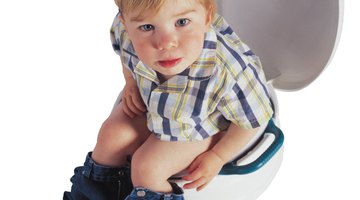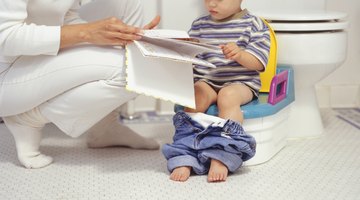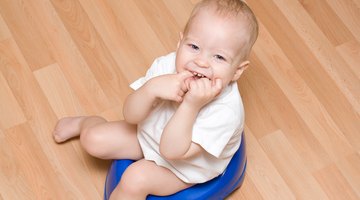How to Teach ADHD Kids Potty Training
ADHD stands for attention deficit hyperactivity disorder, a condition characterized by lack of attention, hyperactivity and impulsiveness.
Children with ADHD may struggle with potty training more than children without special needs due to their lack of self-control. Most kids are ready to start training between 24 and 36 months of age, but kids with ADHD are often ready later than most kids. If you try to force a child to potty train before he is ready, it can make the process especially difficult and long. If your child shows resistance to potty training, wait a few weeks or months and then try again. Signs of potty training readiness include understanding of what the toilet is and words associated with it (pee, poop, clean, dirty, wet, dry), interest in staying dry and using the toilet and ability to control bladder and bowel movements for a couple hours. Parents of children with special needs, including ADHD, will need to practice patience and allow their children more time to learn how to potty train.
Place the potty chair in your child’s favorite room. Make sure the potty chair is low enough to the ground to allow your child’s feet to touch the floor, which will give him a sense of security and control. Show your child the potty, and explain to him that when he feels like he needs to pee or poop, he should sit on the potty chair. Let him decorate the potty so he feels ownership of it and is more excited about using it.
Ask your child to sit on the potty for a few minutes about 20 minutes after she has finished eating or if she looks as though she may need to use the toilet. Put some of her favorite books by the potty so she can read them while she sits. The books will help her focus her attention long enough to remain on the potty. You can also place a CD player with her favorite songs, hand-held computer games, a small tray with a puzzle or anything your child loves next to the potty to keep her there for several minutes.
Give your child a wristwatch with an alarm function. Set it to go off at about two- or three-hour intervals and after meal times. Explain to your child that when this alarm sounds, it is time to try using the toilet. Some kids with ADHD will ignore their bodies’ internal cues that they need to go to the bathroom, because they are more interested in their current activities. The alarm will remind them it is important to stop and use the potty. Parents and caregivers will need to listen for the alarm and remind the child to help make this response a habit.
Reward your child for any potty success. For example, give him his favorite snack, or create a sticker chart with a special prize waiting if he earns three stickers. If your child goes to the potty on his own, you may want to give him an extraspecial reward, such as a trip to the ice-cream parlor.
Be encouraging and patient. If your child has an accident, simply clean it up and move on. Do not embarrass or show exasperation toward your child, or you may turn potty training into a negative, confidence-shattering experience.











